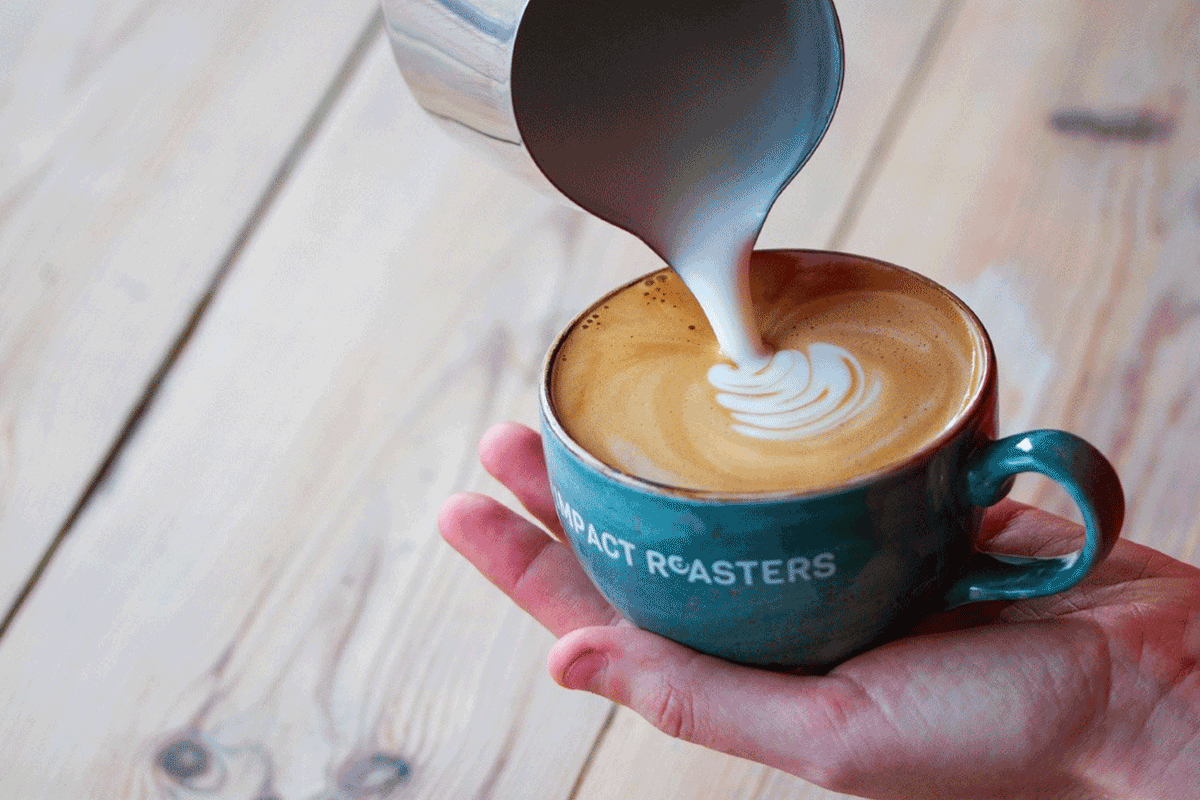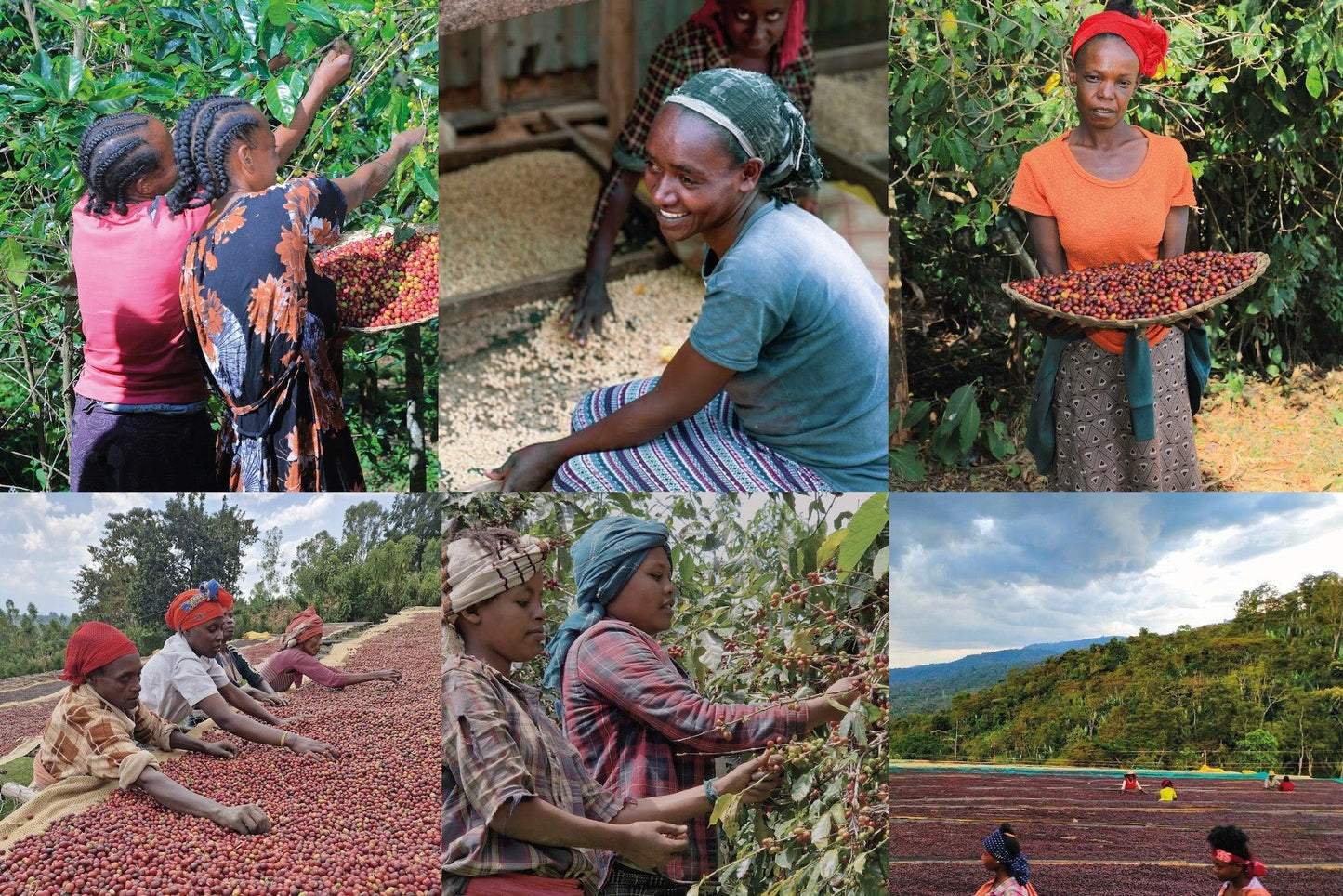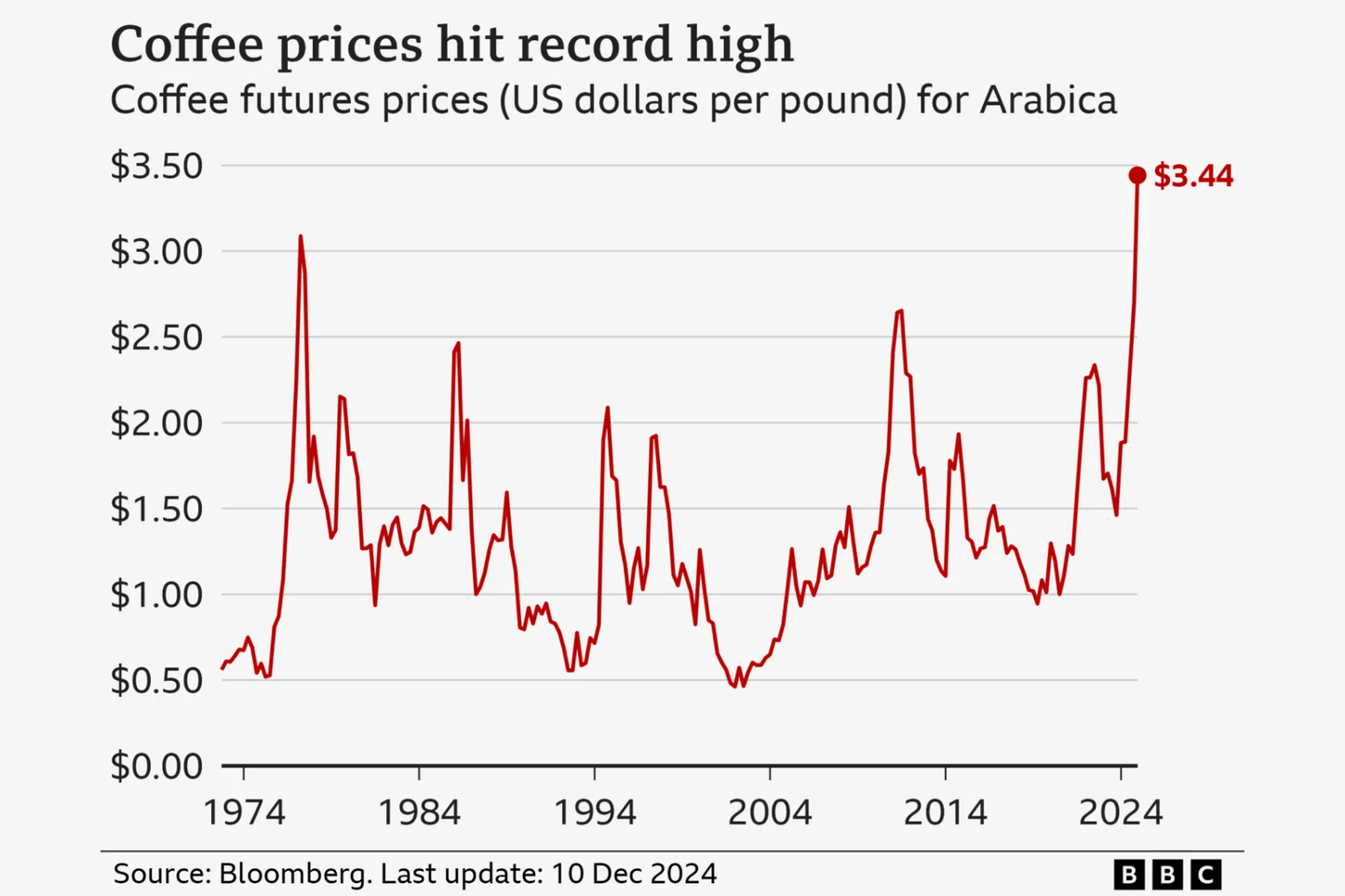Get 20% OFF on all coffee beans when you buy minimum 2 kg!

Know your coffee: Milk based coffee drinks
With many different types of coffee, it can sometimes be confusing to navigate through the coffee world. Therefore, we have made a small guide explaining the main milk-based drinks like Cafe Latte, Flat White and more.
Cafe Latte, Cappucino, Flat White, Americano, Cortado? First, let's start with the basics: you can primarily get coffee with or without milk. Without milk, it's typically referred to as a pure espresso shot, an Americano (an espresso shot with hot water poured in), filter, or pour-overs - but there can always be added a shot of cold milk afterward. We have gathered the most common milk-based coffee drinks (which are also the drinks we sell) for you, so it's easier to navigate on your coffee journey.
All the drinks we are going talk about are based on an espresso shot. What differs one drink from the other is the amount of milk and how it's processed. We have also taken this opportunity to create a small illustration for the coffee types.

1. Latte
Caffé Latte, or simply Latte, is a beloved milk-based coffee drink originating from Italy, where "Caffé" means coffee and "Latte" means milk. It features a bold espresso base, creamy steamed milk, and a light topping of milk foam, often used for latte art.
Lattes are versatile and can be customized with flavored syrups like vanilla or caramel, or made with alternative milks like oat or almond. Whether hot or iced, the Latte’s smooth, creamy texture makes it a favorite for any time of day.

2. Cappuccino
A Cappuccino, like a Latte, combines espresso, steamed milk, and milk foam, but its hallmark is the equal layers: one-third espresso, one-third steamed milk, and one-third dense milk foam. This creates a creamy texture with a bold espresso flavor.
What sets the Cappuccino apart is its thick, velvety foam, sturdy enough to hold a teaspoon without sinking. Served in a smaller cup than a Latte, it offers a stronger coffee taste with a lighter, frothier feel.



Often topped with a sprinkle of cocoa powder or cinnamon, the Cappuccino is a timeless choice for those who enjoy a rich, balanced coffee experience. Perfect for savoring slowly, it’s ideal for mornings or leisurely afternoons.
3. Flat white
A Flat White follows the same principles as a Latte but offers a more concentrated coffee experience. It features an espresso shot as its base, combined with less steamed milk and an even thinner layer of microfoam. The foam is so minimal that it’s often barely visible, giving the drink its signature "flat" appearance.
Unlike a Latte, the Flat White emphasizes the bold flavor of the espresso, with the milk serving to enhance its richness rather than overshadow it. While some Flat Whites may include latte art, this depends on the barista’s technique and how "flat" they prefer to make the drink.

4. Cortado
A Cortado is a simple yet flavorful coffee drink that consists of an espresso shot combined with a small amount of steamed milk. Unlike a Flat White, the Cortado uses even less milk and has no foam, allowing the espresso’s bold flavor to remain the dominant element.
The milk in a Cortado is carefully steamed to create a smooth, velvety texture, but it’s not frothy like in other drinks, making it a perfect choice for those who want a coffee that's rich in flavor but less creamy than a Latte or Cappuccino.
The Cortado is an ideal option for coffee drinkers who appreciate the balance of strong espresso with just a touch of milk to soften its intensity, without losing the coffee's distinctive taste. It’s often enjoyed as a quick, yet satisfying, pick-me-up throughout the day.

5. Latte Macchiato
A Latte Macchiato starts with steamed milk poured into the glass, followed by an espresso shot that "stains" the milk. A small amount of foamed milk is then added on top, creating a layered effect.
The word "Macchiato" means "stained" or "spotted," referring to how the espresso marks the milk. Unlike a traditional Latte, the espresso sits on top, giving it a bolder flavor.
This drink is perfect for those who enjoy a lighter, smooth coffee with a visually appealing presentation.

6. Espresso Macchiato
Compared to the Latte Macchiato, here, you just add "spotting" of the foamed milk directly on top of the espresso shot - no steamed milk or anything else. This is the type of coffee with the least amount of milk in it.
Running low on coffee?
Order your favorite beans from Impact Roasters and enjoy free delivery acrossDenmark on orders over 250 DKK!
7. Mocha
A mocha coffee drink adds chocolate in it after the espresso shot and before the milk is added. Apart from that, it can follow all the previously mentioned types when processing the milk.
A Mocha combines espresso with chocolate syrup or powder, creating a sweet base before adding steamed milk. It follows the same milk processing methods as Lattes or Cappuccinos.
The result is a creamy, indulgent drink that balances the bold espresso flavor with the sweetness of chocolate. Often topped with whipped cream or cocoa powder, a Mocha is perfect for those who enjoy a rich, dessert-like coffee.






